Indoor hanging plants are more than just a trend in home decor; they are a delightful way to bring nature indoors, adding a fresh and vibrant touch to any living space. The beauty of hanging plants lies in their versatility. They can brighten up a dull corner, add levels to a room's aesthetic, or even become a living piece of art. Whether you are an experienced plant parent or a beginner looking to add some greenery to your home, hanging plants offer an accessible and stylish way to enhance your indoor environment.
In this post, we'll explore a few indoor hanging plants to add to your indoor space and offer tips on choosing the right ones.
Best indoor hanging plants
String of Pearls
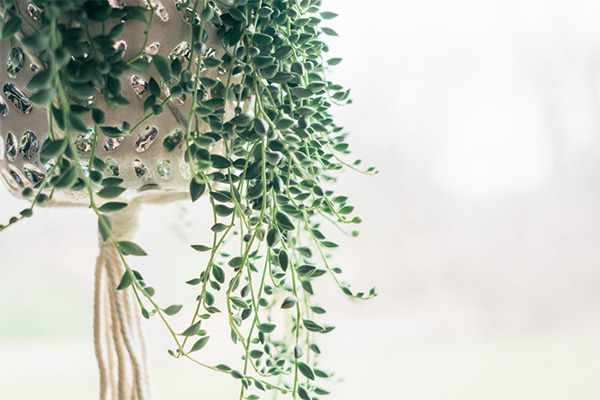
Adding a String of Pearls to your indoor space is a charming and creative way to add a touch of whimsy and natural beauty. This unique succulent is famed for its small, round, bead-like leaves that elegantly cascade down trailing stems, resembling a pearl necklace. This feature makes it a standout choice for hanging planters, where its strands can beautifully drape, creating an eye-catching display.
Ideal for plant lovers who appreciate unusual and low-maintenance hanging plants, the String of Pearls is perfect for brightening up spaces like living rooms, offices, or bedrooms. This plant flourishes in bright, indirect sunlight and necessitates well-draining soil. Regarding watering, it favors a dry-out period between waterings, characteristic of succulents, which makes its care relatively straightforward.
Hoya
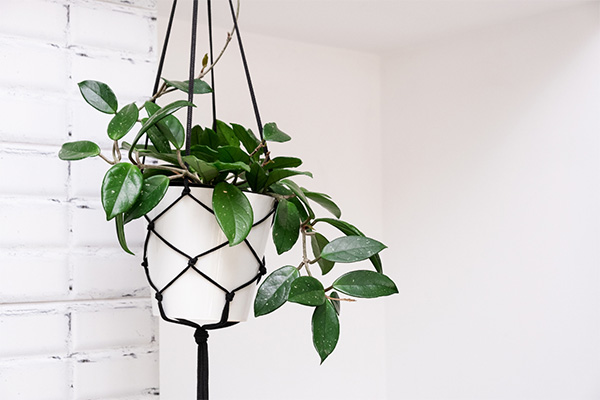
Incorporating Hoya into your indoor space can be an excellent choice. Hoyas are known for their glossy, waxy leaves and stunning, star-shaped flowers that can add a touch of exotic flair. These plants are particularly appealing for their fragrant, eye-catching blooms, which can vary in color depending on the species. Ideal for plant enthusiasts who appreciate ornamental and low-maintenance hanging plants, Hoyas are perfect for adding vertical interest in hanging baskets or draping over shelves.
Hoyas thrive in indirect bright light and need well-draining soil, typical for epiphytes. They prefer a slightly root-bound environment, reducing the need for frequent repotting. When it comes to watering, it's advisable to maintain moderation and let the soil dry out somewhat between waterings. This approach to care makes Hoyas particularly forgiving for busy or forgetful plant owners. Their ease of care and stunning appearance make Hoyas an excellent choice for anyone looking to beautify their indoor space with a resilient and striking plant.
Burro’s Tail
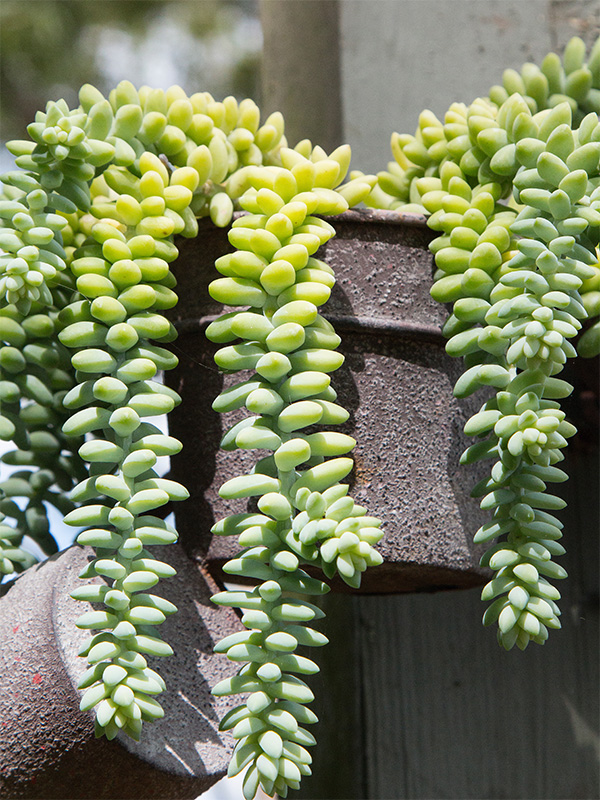
Incorporating a Burro’s Tail into your indoor space adds a striking and unique element to your decor. This succulent is known for its long, trailing stems densely packed with plump, green leaves resembling a tail. Ideal for a hanging basket or hanging planter, it creates a dramatic cascade of foliage, perfect for adding texture and a touch of greenery to any room.
The Burro’s Tail suits those seeking low-maintenance and drought-tolerant plants. Thriving in indirect bright light, this succulent is well-suited for well-lit rooms. In terms of watering, it favors a 'less is more' approach— allowing the soil to dry out between waterings to prevent overwatering. Its distinctive look and easy care make the Burro’s Tail a fantastic choice for both novice and experienced plant enthusiasts.
Fishbone Cactus
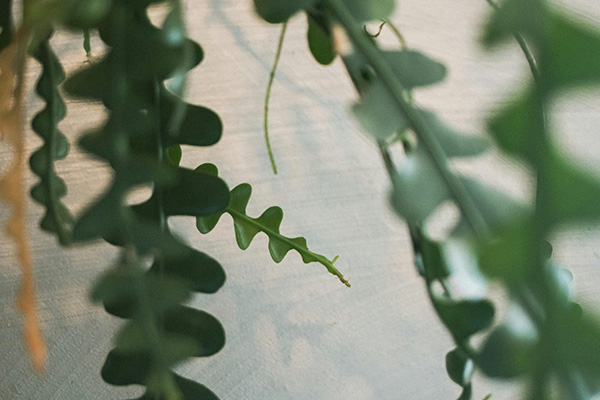
Fishbone Cactus is one of the most fantastic hanging indoor plants as it introduces an intriguing and sculptural element into your home. This cactus is unique for its zigzag, fishbone-like stems, which contrast the typical foliage found in most houseplants. Its unusual form makes it a perfect focal point in any room, particularly in hanging baskets where its cascading stems can be fully appreciated.
The Fishbone Cactus is ideal for those who love distinctive, low-maintenance hanging plants. Thriving in bright, indirect light and favoring a well-draining soil mix commonly associated with most cacti and succulents, this plant should be watered sparingly. Allow the soil to dry out between waterings for optimal care. This plant is also known to bloom under the right conditions, producing beautiful, fragrant flowers. Its ease of care and visually interesting appearance make it a great choice for both experienced plant enthusiasts and beginners looking to add a unique touch to their indoor garden.
Boston Fern
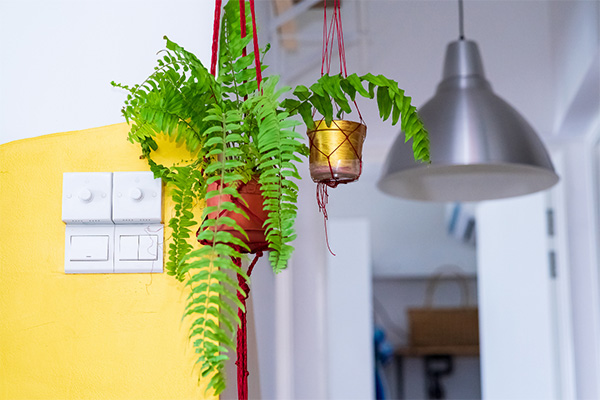
One of the widely favored choices for both indoor and outdoor hanging plants is the Boston Fern. Adding a Boston Fern to your indoor space and as an outdoor hanging plant can create a lush, verdant atmosphere, evoking the feel of a tranquil forest. Known for its arching, feathery fronds, the Boston Fern is a classic choice for bringing vibrant greenery indoors. Beyond its decorative appeal, the Boston Fern's capacity to purify the air renders it an aesthetically pleasing choice and healthful one.
Perfect for plant enthusiasts who appreciate lush, leafy greenery, the Boston Fern flourishes in a humid environment, making it an excellent addition to bathrooms or kitchens. It prefers indirect, filtered light, mimicking its natural rainforest habitat. When it comes to watering, consistency is key; the soil should be kept evenly moist but not soggy, and the plant benefits from regular misting to maintain humidity.
Rhipsalis
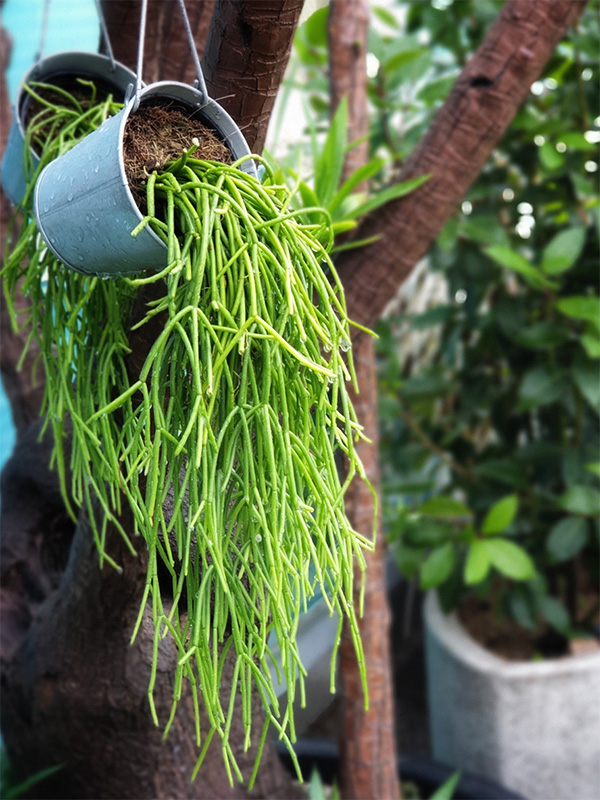
Rhipsalis is a lesser-known type of cactus and is an excellent plant to add a touch of exotic greenery with minimal effort. Unlike the typical cactus, Rhipsalis has long, slender, and sometimes branching stems that create a soft, cascading effect, making it ideal for hanging baskets or high shelves. This plant's unique, jungle-like appearance brings an unexpected and refreshing aesthetic to any room.
Rhipsalis is perfect for those who appreciate unusual plants but may not have extensive gardening experience. Thriving in moderate to bright, indirect light, the Rhipsalis mimics its natural habitat under the canopies of rainforests. In terms of watering, a light touch is preferred for optimal care. Allow the soil to dry out partially between waterings, but don't let it completely dry out, as this plant enjoys a bit more moisture than the average cactus.
String of Hearts
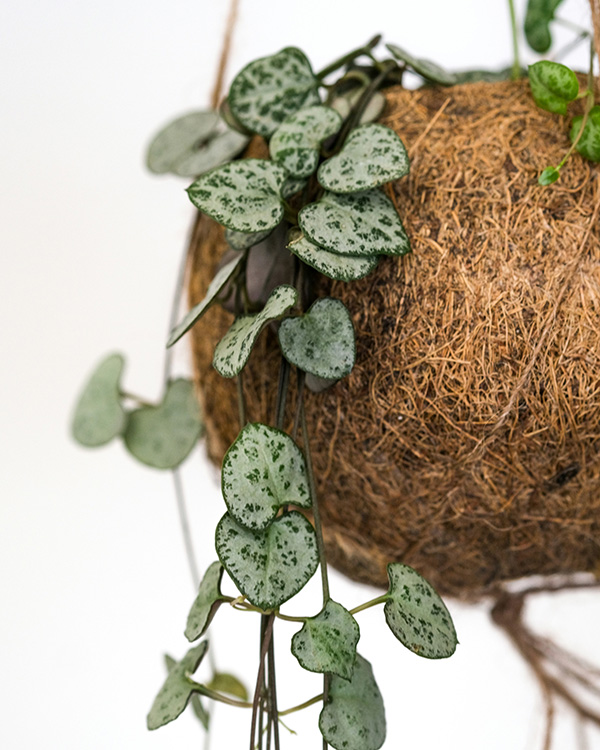
Adding the String of Hearts to your indoor space not only enhances the visual appeal of your space but also brings a sense of serenity and natural beauty. This trailing vine is renowned for its delicate, heart-shaped leaves adorned with a striking marbled pattern, creating a romantic and whimsical ambiance. It's particularly well-suited for a hanging pot or on high shelves, where its cascading vines can be fully displayed.
The String of Hearts is ideal for plant lovers seeking a low-maintenance yet visually stunning plant. It favors bright, indirect light but is also adaptable to lower light conditions. This plant prefers well-draining soil and requires minimal watering, with a significant dry-out period between waterings, making it forgiving for those new to plant care or with busy schedules.
Spider Plants
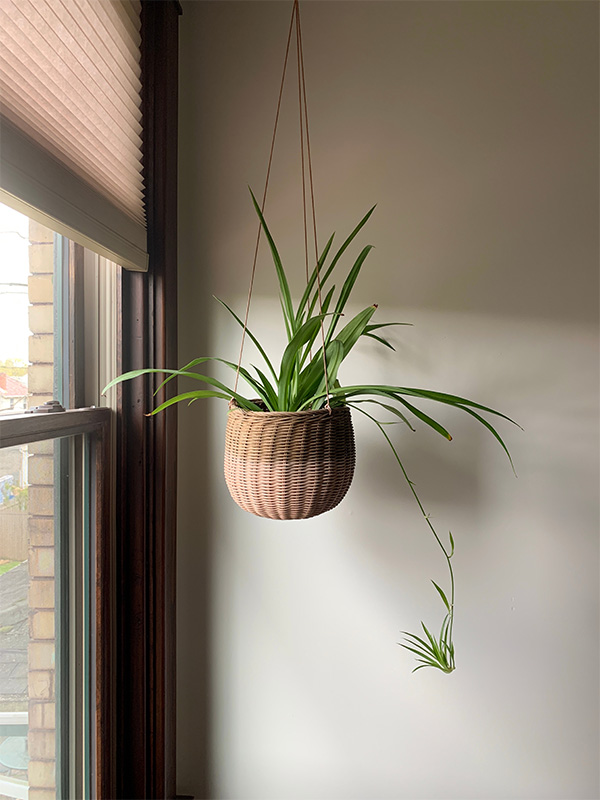
Spider Plant is among the most popular indoor hanging plants. Adding this spider plant is not only a fantastic way to enhance a room's aesthetic, but it also improves air quality, making it a healthy addition to any indoor environment. Known for its arching leaves and characteristic spider-like plantlets, the Spider Plant is both visually appealing and exceptionally easy to grow, making it perfect for beginners and busy individuals. Adding to its appeal, the Spider Plant is admired for its adaptability to various conditions and its resilience against pests.
The Spider Plant is well-suited for those who enjoy greenery but may not have the time for high-maintenance care. Thriving in various light conditions, ranging from low to bright indirect light, the Spider Plant proves versatile for different spaces. The approach is straightforward regarding watering: allow the soil to dry out between waterings.
Pothos
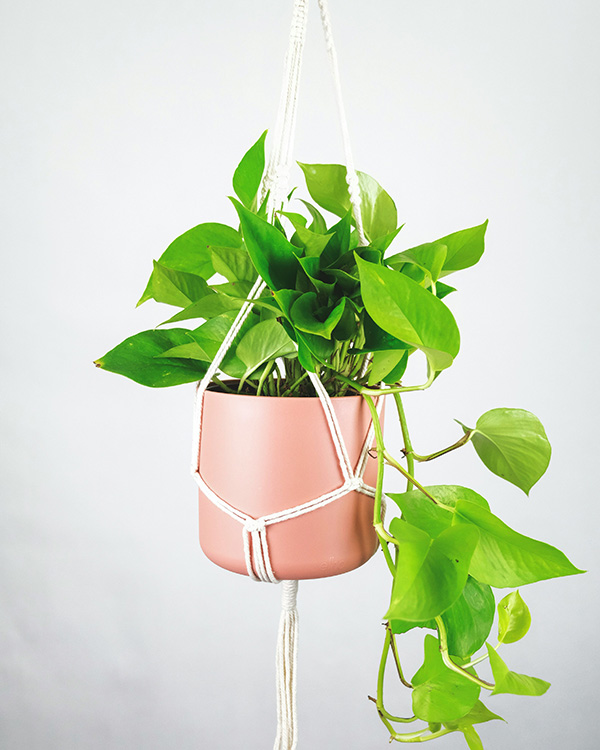
Pothos is an excellent choice for anyone looking to enhance their environment with lush, easy-care greenery. Adding a Pothos plant to your home or office brings a piece of nature indoors and acts as an air purifier, making your space healthier and more aesthetically pleasing. Pothos plants are cherished for their variegated, glossy heart-shaped leaves that come in various patterns and colors, adding a vibrant touch to any setting. Their trailing vines can be left to hang or guided along a surface, offering versatility in styling.
Due to its forgiving nature, Pothos is especially well-suited for beginners or individuals with a busy lifestyle. It adapts seamlessly to various lighting conditions, spanning from low light to bright, indirect sunlight. When it comes to watering, the Pothos is not demanding – allowing the soil to dry out partially between waterings is usually sufficient.
Mistletoe Cactus
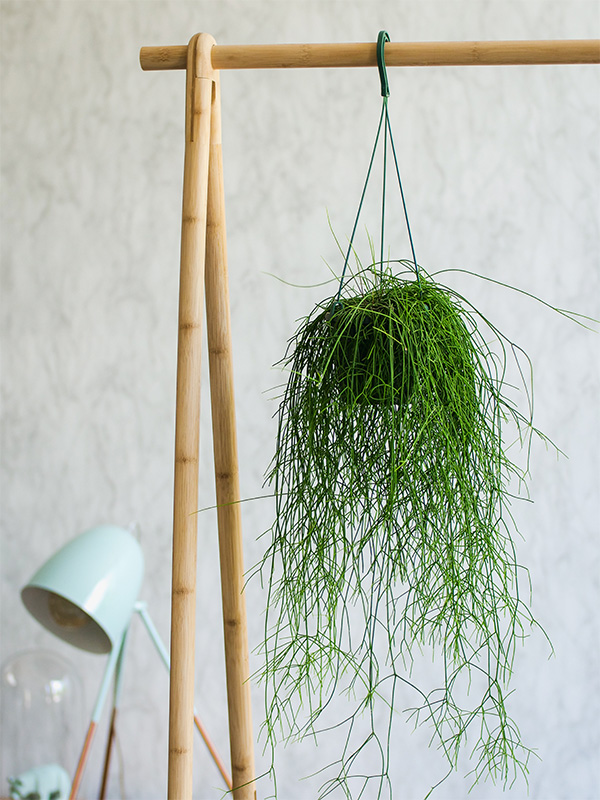
Adding a Mistletoe Cactus to your space not only brings a unique aesthetic but also offers an easy-care option, making it a great choice for busy individuals or beginners in plant care. This cactus stands out from its desert relatives with its cascading, thread-like stems that create a soft, rainforest-like appearance. It's perfect for adding a green, lush look in hanging baskets or on high shelves where its draping form can be fully appreciated.
Ideal for those seeking low-maintenance yet visually interesting plants, the Mistletoe Cactus is perfect for indoor environments. Flourishing in bright, indirect light, the Pothos plant can also adapt to lower light conditions. Unlike typical cacti, it prefers a bit more moisture; watering should be done when the topsoil feels slightly dry to the touch and the plant benefits from occasional misting.
Swiss cheese plant
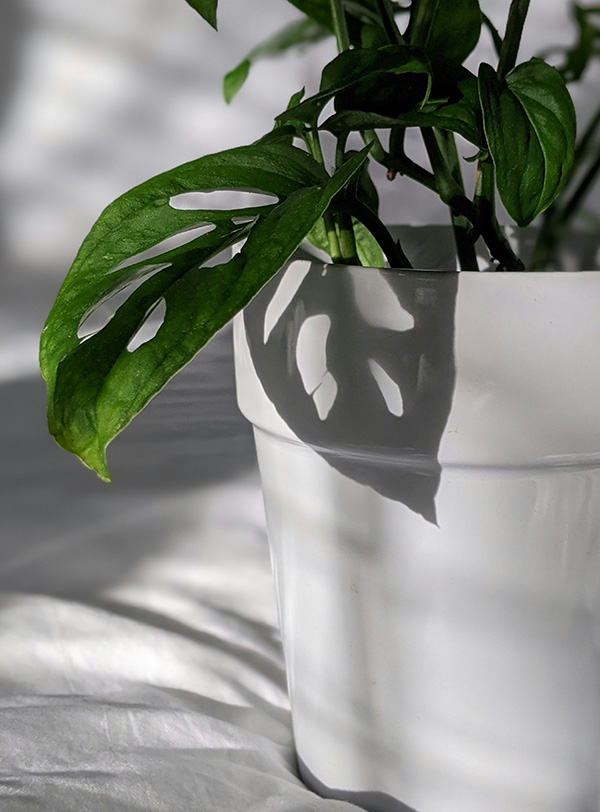
Swiss cheese plant is a fantastic hanging plant to add to your indoor space, bringing a bold, tropical flair to your home. More than just a decorative element, this plant serves as an air purifier, making it a healthful addition to your indoor environment. Swiss cheese plant is celebrated for its large, glossy leaves with distinctive natural holes resembling Swiss cheese, which give it a unique and eye-catching appearance. Its ability to grow large and lush makes it a statement piece in any room, especially in living areas or spacious offices.
The Swiss cheese plant is ideal for those who love dramatic, jungle-like greenery but prefer low-maintenance care. Thriving in bright, indirect light, this plant can tolerate lower light levels. Consistent watering is essential, allowing the top inch of soil to dry out between waterings. Occasional misting or wiping the leaves can help replicate its humid, natural habitat.
English Ivy

Introducing English Ivy (Hedera helix) to your indoor space is a splendid way to add a touch of classic elegance and natural charm. Known for its lush, trailing vines and small, heart-shaped leaves, English Ivy brings any room a traditional yet sophisticated feel. Its versatility allows it to be used in various ways – as a hanging plant, a climbing vine on a trellis, or even as ground cover in larger plant arrangements. Beyond its decorative charm, English Ivy is renowned for its air-purifying qualities, making it a healthful addition to your home or office.
English Ivy is particularly suitable for those who appreciate versatile and adaptive plants. Thriving in various lighting conditions, from partial shade to moderate indirect light, this plant is well-suited for various indoor settings. Care for English Ivy involves keeping the soil consistently moist but not soggy and providing occasional pruning to maintain its shape and promote fuller growth.
String of Dolphins
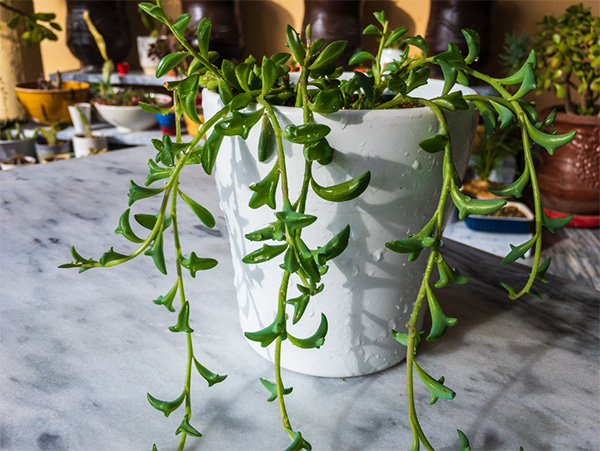
Adding String of Dolphins to your indoor space is a delightful and whimsical choice. It not only adds a touch of whimsy but also the joys of easy care, making it a fantastic choice for busy individuals or beginners in plant care who want to add a unique, lively element to their indoor garden. This charming succulent is celebrated for its small, dolphin-shaped leaves that appear to leap along trailing stems, creating a unique and playful visual. It's perfect for those who enjoy quirky, conversation-starting plants and suits well in hanging baskets where its trailing nature can be showcased.
Ideal for plant enthusiasts looking for low-maintenance and novel varieties, Dolphin plants thrive in bright, indirect light, making them suitable for rooms with good natural light. They require well-draining soil and minimal watering, echoing the care needs of most succulents - let the soil dry out between waterings.
